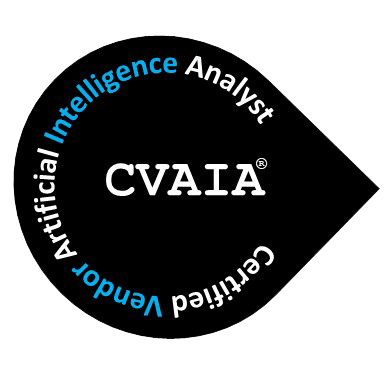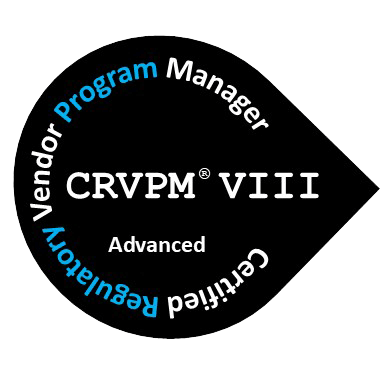CRVPM Level VIII/Certified Vendor AI Analyst (CVAIA®)
CRVPM Level VIII/Certified Vendor AI Analyst (CVAIA®)
AI is moving faster than the speed of thought and keeping up with this dynamically evolving game-changing technology can be difficult at best. AI provides huge benefits if we understand how and when to leverage it and how to vet our vendors. There are a multitude of definitions to understand as well as risks and business benefits. Knowing which questions to ask your vendors is as challenging as understanding their responses. And by the way, not everything that claims to be AI really is AI. The pressure from Senior Executives and Board members who want to jump into AI out of Fear of Missing Out (FOMO) creates additional pressure to move forward before we know what we don’t know, resulting in a plethora of exposures on multiple levels.
Web-based, self-paced eLearning course. EXTREMELY COMPREHENSIVE!
Course: 7 chapters, each with exam (80% to pass)
Time Required: Approximately 15 hours
CPE Eligible: 18 CPE credits (based on 1 credit per 50 minutes)
Cost: $1,299.00 per person (introductory pricing)
Course Materials: Companion Documents, AI Due Diligence Question Set
Post-course:
- CRVPM Level VIII Certificate
- CVAIA® Certificate
- CVAIA® Designation Number
- CRVPM Level VIII Badge
- CVAIA® Badge
- 1 year free telephone/email support
COURSE GOALS
Knowledgebase: Build your AI vocabulary, knowledgebase and skillsets, and impart the confidence you need to have well-informed meaningful AI discussions with your team, management, and your vendors before you take the AI plunge.
Risk Management: Understand what AI Risk is, how it differs from traditional risk, and understand the frameworks that help identify, measure, manage and mitigate it.
Vendor Management: Develop the knowledge required to augment your current vendor management program and build a vetting process for AI technologies and the vendors that provide them or provide solutions that utilize them.
AGENDA
Chapter 1 – Artificial Intelligence: this chapter discusses the following:
- What AI is and, just as important, what it is not
- AI Types
- AI Models Defined
- AI Technologies
- Use cases
- Benefits and Risks of Artificial Intelligence
Chapter 2 – AI & My Vendors: this chapters provides questions to ask, documentation to collect, to determine if the solution you’re investigating is really AI. It continues with:
- Due Diligence Questions
- Contract Issues to Consider
- AI Types and Technologies
- Model Testing and Validation
- Benefits & Risks
- Performance and Scalability issues
- Hidden costs
Chapter 3 – AI Agents and Agentic AI: Agentic AI is a true game-changer that is affecting life as we know it. This chapter covers:
- Definitions
- Examples and Comparisons
- AI Bias and Mitigation Strategies
- Agentic AI Architecture
- Benefits and risks of AI Agents and Agentic AI
Chapter 4 – Governance: Where would we be without Governance? Without tone from the top, it’s difficult for any program to succeed. This chapter covers:
- Governance Defined
- AI Governance Components and Principles
- AI Model Governance Components and Principles
- AI Policy Components
Chapter 5 – AI Risk Management Frameworks: This chapter dives into ISO 42001, NIST AI Risk Management Framework and the EU AI Act Risk Management Framework and examines the concepts, principles, similarities and differences. AI Risk differs from Traditional risk and requires frameworks that address not only the traditional exposures but those pertaining to the following:
- Ethical use of AI
- Potential harm to individuals and society
- Bias
- Fairness
- Transparency
Chapter 6 – Regulations: While the European passed the EU AI Act, there are other countries that are addressing AI through bits and pieces of existing regulations. Some countries have no regulations at all and are in the process of reviewing proposed regulations. The United States does not yet have a Federal regulation equivalent to the EU’s and individual states are developing their own. This chapter covers several country and state regulations and proposed legislation.


